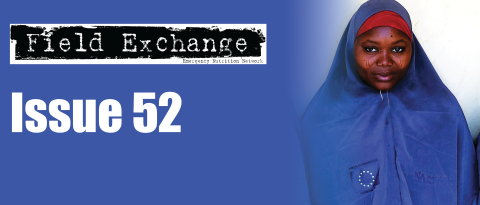Is MUAC alone a sufficient criterion for admission of children at high risk of mortality in South Sudan?
Summary of research 1
Location: South Sudan
What we know: The operational implications of using MUAC as the sole anthropometric admission criterion to therapeutic feeding programmes are uncertain.
What this article adds: A retrospective analysis of routine outpatient treatment programme data of children with uncomplicated SAM aged 6-59 months compared patient characteristics of children admitted under MUAC<115mm alone v. children admitted under weight for height z score < -3 (MUAC>115mm). The study shows that MUAC < 115mm identified more severely malnourished, more female and younger age children with a higher risk of mortality, but failed to identify a third of the children who died (98% were identified by WHZ < -3 alone and 100% by MUAC < 130mm). Adjusting for age and sex, the risk of death was over four times higher among children admitted with MUAC<115mm. The greater sensitivity of WHZ < -3 to identify nearly all deaths observed in this study could be specific to this population. Increasing the admission threshold to MUAC < 125mm would identify nearly all deaths but has programming implications.
Following endorsement of the community management of acute malnutrition (CMAM) model by United Nations (UN) agencies in 2007, programming has been widely scaled up across many countries. Current guidelines recommend three admission criteria to therapeutic feeding for children 6-59 months; i) weight-for-height Z-score (WHZ) < -3 (WHO growth standards 2006), ii) mid-upper arm circumference (MUAC) <115mm, or iii) presence of bilateral oedema. Recent years have seen the move towards using MUAC as the sole anthropometric admission criterion due to its simplicity of measurement and use. Transition to a single MUAC criterion for admission to therapeutic feeding is, however, complicated by MUAC and WHZ selecting different children at risk of acute malnutrition. The objective of this study was to describe the operational implications of using MUAC as a single admission criterion for treatment of severe acute malnutrition (SAM) in South Sudan.
Design
The authors performed a retrospective analysis of routine programme data of children with uncomplicated SAM aged 6-59 months, admitted to an MSF outpatient therapeutic feeding programme (TFP) in Aweil, South Sudan in 2010. In order to understand the implications of using MUAC as a single admission criterion, the study compared patient characteristics and treatment outcomes for children admitted with MUAC <115 mm irrespective of WHZ (MUAC+ group) v. children admitted with WHZ < -3 and MUAC >115mm (MUAC −/WHZ+group). Treatment protocols were according to national guidelines and treatment outcomes were defined for all children as one of death, default, transfer or recovered.
Results
Of 2205 children included for analysis, median age was 14 months (interquartile range=10–24 months) and 53% were male. A total of 719 (32.6%) were admitted to the programme with MUAC < 115mm and 1486 (67.4%) with WHZ < -3 and MUAC > 115mm. Children in the MUAC+ group were more severely malnourished (average MUAC 107.3mm and average WHZ -4.3, compared to 122.5mm and -3.8 in the MUAC −/WHZ+group), and more likely to be female and younger. Children in the MUAC+ group were less likely to recover (54% v. 69%) and had higher risk of death (4% v. 1%) but responded to treatment with greater weight and MUAC gains. Adjusting for age and sex, the risk of death was over four times higher among children admitted with MUAC<115 mm compared with the MUAC −/WHZ+group (risk ratio=4·02; 95% CI 2·10, 8·08). MUAC < 115 mm would have failed to identify 33% (n=13) of deaths, while 98% (n=39) were identified by WHZ < -3 alone and 100% (n=40) by MUAC < 130mm.
Conclusions
The study shows that MUAC < 115mm identified more severely malnourished, more female and younger aged children with a higher risk of mortality, but failed to identify a third of the children who died. The greater sensitivity of WHZ < -3 to identify nearly all deaths observed in this study could be specific to the study context (the Nilotic population who have a tall slim body shape, associated with low WHZ) and therefore cannot be assumed to have high external validity. The authors suggest that an upward adjustment of the MUAC admission threshold to MUAC < 125mm could be applied to identify nearly all deaths (e.g. 95%) in this setting. Any such upward adjustment would yield a more sensitive, but less specific criterion for admission and would have important programmatic implications including increased workload and costs. The authors conclude by stating that admission criteria for therapeutic feeding should be adapted to the programmatic context with consideration for both operational and public health implications.
References
1 Grellety, E., Krause, L. K., Eldin, M. S., Porten, K., and Isnaka, S. (2015). Comparison of weight-for-height and mid-upper arm circumference (MUAC) in a therapeutic feeding programme in South Sudan: is MUAC alone a sufficient criterion for admission of children at high risk of mortality? Public Health Nutrition (2015) doi: 10.1017/S1368980015000737.


